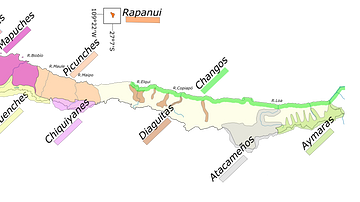Review

| Rating: | |
|---|---|
| Title: | Plagues Upon the Earth: Disease and the Course of Human History |
| Author: | Kyle Harper |
| Audience: | General Public |
| Difficulty: | Medium |
| Publisher: | Princeton University Press |
| Published: | 2021 |
| Pages: | 704 |
This book is great for readers seeking the stories of humanity's interactions with pathogens. In light of our modern struggles with pandemics, this is a great read to understand our present. Accessible to a general audience, "Plagues Upon the Earth" examines the science and history of pathogens, from early hominids to the modern-day pathogens' effects on civilization, by explaining how pathogens have benefited from their relationship with us.
At the height of the COVID-19 lockdown in October 2020, Brown University hosted the Pandemics and Plagues in Antiquity webinar lecture series. Kyle Harper, Professor of Classics at the University of Oklahoma, hosted the first session. The talk featured the content of his book The Fate of Rome: Climate, Disease, and the End of an Empire (2017). Unbeknown to me at the time, Harper had already begun working on his next book, Plagues Upon the Earth: Disease and the Course of Human History (2021), before the COVID-19 pandemic began. This monumental book arrived at bookstores a year later, and just like its predecessor The Fate of Rome, I swiftly obtained a copy.
The introduction of Plagues Upon the Earth clearly presents Harper's goals for this book, the research question, and the limitations of writing a history covering millions of years and every corner of the planet. This book could have easily been a trilogy - a trilogy I would buy. It covers a depth of information, leaving the readers hungry for more, while still managing to solidify itself as a single book. “The goal of this book is to tell the story of how we have acquired our distinct disease pool and what it has meant for us as a species. It is a history in which we are a part of nature, rather than apart from it” (5). Harper’s argument is based on four sections of humankind’s technological innovations and how they impacted our relationship with diseases: fires, farms, frontiers, and fossils. “Modernity is not a one-way street to human supremacy over nature, but a kind of escalating ratchet, in which humans have gained a remarkable but unstable advantage over an ever-growing number of parasites” (8). Pathogens have one goal, and that is to pass on their genetic code. Humans have crafted themselves to be the perfect hosts for this goal due to our immensely dense population and the high transmission rate of our global interconnection. Humans are a successful species, and pathogens and parasites have benefited from our success.
This book has an interdisciplinary approach that covers biology, ecology, and history. Readers do not have to be a scientist or a historian to enjoy this book, but readers should be ready for the scientific background required to understand pathogens and parasites. The result of Harper's utilization of multiple scholarly disciplines is a complex yet informative thesis, which is that human history and the history of pathogens complement, shape, and give patterns to each other simultaneously.
Harper combines evidence from skeletal records, estimations of crude death rates, and average life expectancies. His evidence provides “insights into changing patterns of health and disease that would otherwise remain hopelessly obscure” (12). He also utilizes ideas from medical, environmental, and economic history as well as genomes, which he helpfully acknowledges that it has a level of uncertainty as it is new evidence.
Amid complex virological and genetic concepts, Harper conveys them in an approachable and insightful way. In early chapters, he gives many details on how certain diseases function and how they affect the human body. However, Harper's aim is not always as clear in the latter portions of the book. Sometimes it is hard to see the direction of his specific arguments among all the evidence he provides. Despite the density of the book, Harper’s writing, accompanied by 45 images and 20 maps, will be compelling for readers. Plagues Upon the Earth is a highly provoking and enjoyable read. It shows that our success as a species is equally paralleled to the success of pathogens.
About the Reviewer
Cite This Work
APA Style
Fox, M. A. (2023, February 01). Plagues Upon the Earth: Disease and the Course of Human History. World History Encyclopedia. Retrieved from https://www.worldhistory.org/review/330/plagues-upon-the-earth-disease-and-the-course-of-h/
Chicago Style
Fox, Makayla Alderson. "Plagues Upon the Earth: Disease and the Course of Human History." World History Encyclopedia. Last modified February 01, 2023. https://www.worldhistory.org/review/330/plagues-upon-the-earth-disease-and-the-course-of-h/.
MLA Style
Fox, Makayla Alderson. "Plagues Upon the Earth: Disease and the Course of Human History." World History Encyclopedia. World History Encyclopedia, 01 Feb 2023. Web. 09 Apr 2025.




